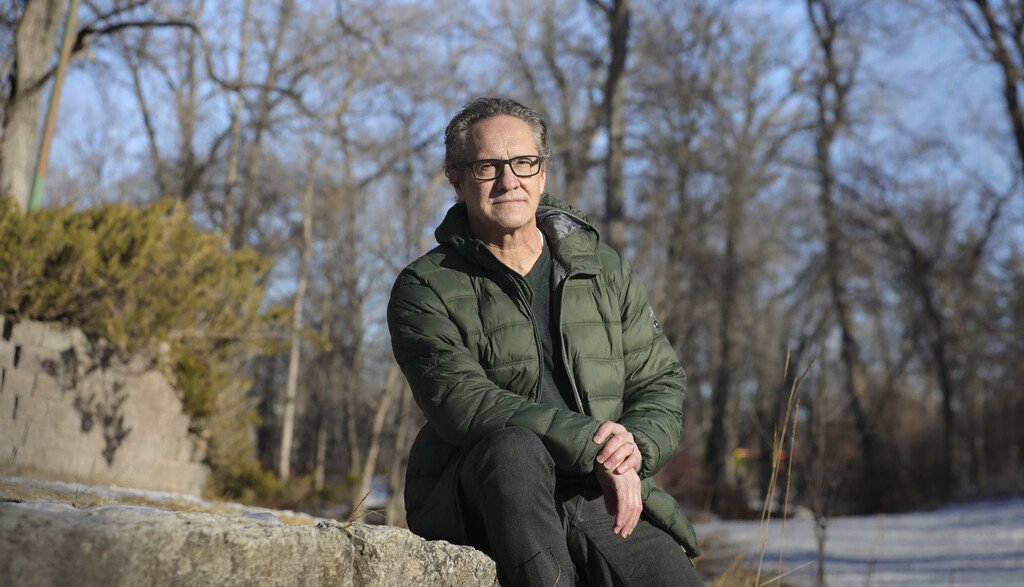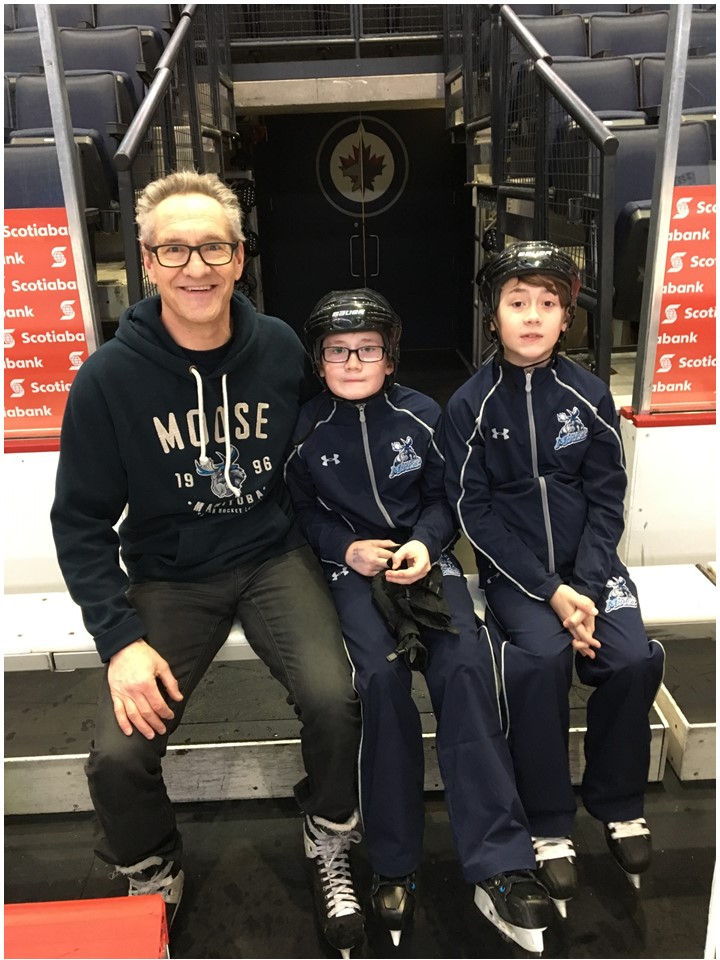- Your full title as you’d like it to appear.
Andrew J Halayko, PhD, ATSF, FCAHS
Professor and Canada Research Chair, Depts of Physiology and Pathophysiology, and Internal Medicine, University of Manitoba
Leader, Biology of Breathing Group, Children’s Hospital Research Institute of Manitoba
- Three statements about you – two true, one false.
- I am co-owner-operator of a horse boarding stable with my wife.
- I was recruited to play junior hockey in the Western Hockey League, but declined to attend university instead.
- I once sang with the punk rock/new wave group Nine Nine Nine on stage.
- Give us your ‘elevator pitch’ biography.
I feel like my career in academia and research picked me, not the other way around. I loved being a student so just kept going when the next opportunity arose. I eventually realized that the one thing I was really trained to do is to be a researcher in an academic institute, though I cannot recall ever making a conscious choice to do that. I just followed my nose, and people like Newman Stephens, MD, and Julian Solway, MD, put me in position to be successful. This nurtured my aptitude and pleasure in working with others and collaborating on multi-disciplinary team projects. This has led to my research program evolving from one with focus on cell and molecular mechanisms for phenotype diversity of airway smooth muscle, to one that uses new findings in pre-clinical studies with murine lung disease models, and biomarker search and validation in human cohorts. Starting with focus on asthma, I now have research projects linked to COPD, pulmonary fibrosis, the lung response to inhaled pollutants, host response to viral infection (including SARS CoV2), and the developmental origins of lung disease, and these collectively use basic science, translational research, and clinical epidemiology approaches. This is all serving me well in the enjoyable role as an associate editor for the ATS Red Journal, the American Journal of Respiratory Cell and Molecular Biology.
just kept going when the next opportunity arose. I eventually realized that the one thing I was really trained to do is to be a researcher in an academic institute, though I cannot recall ever making a conscious choice to do that. I just followed my nose, and people like Newman Stephens, MD, and Julian Solway, MD, put me in position to be successful. This nurtured my aptitude and pleasure in working with others and collaborating on multi-disciplinary team projects. This has led to my research program evolving from one with focus on cell and molecular mechanisms for phenotype diversity of airway smooth muscle, to one that uses new findings in pre-clinical studies with murine lung disease models, and biomarker search and validation in human cohorts. Starting with focus on asthma, I now have research projects linked to COPD, pulmonary fibrosis, the lung response to inhaled pollutants, host response to viral infection (including SARS CoV2), and the developmental origins of lung disease, and these collectively use basic science, translational research, and clinical epidemiology approaches. This is all serving me well in the enjoyable role as an associate editor for the ATS Red Journal, the American Journal of Respiratory Cell and Molecular Biology.
My track record as a mentor may be my greatest joy, in particular seeing many of my trainees and team members become recognized and succeed as independent scientists. I also tend to gravitate to leadership roles, and have had the good fortune to lead a large research group at our institute, and to be integral to founding a number of regional and national research networks. As a complement, I have had the honor of serving as a member and chair of multiple ATS Committees, including chair for the RSF Assembly, chair of the ATS Awards Committee and as the current chair of the International Conference Committee. I also was privileged to serve as both the president of the Canadian Thoracic Society, and as board chair for the Canadian Lung Association.
- What would you tell yourself as an Early Career Professional?
Don’t give up and trust yourself, and align yourself with teams of investigators that both value your unique input, and support your capacity to deliver. I was fortunate that I was supported and encouraged to develop projects based on my own ideas and interest. That personal investment and sense of ownership is what will drive you when you hit a rough spot. It will also enable you to best develop collaborations with local researchers that will have tractable mutual benefit.
In a more practical sense, I recommend carving out a simple but unique niche and becoming recognized for that before you branch out into new territory. Focus on short- and middle-term objectives, and leave the long term vision until after you are established. If you follow that route, you will be working from a position of strength while you grow your career, and you will be most comfortable in taking on and training people to support you and your program. The trick is to find that niche and “own it.” If you have that, then you always have a safety net to catch you if you try something new and it doesn’t work out as well as you had hoped.
- If you weren’t in medicine, and were in a different industry altogether, what would you be?
I enjoy seeing big projects come together, so that brings a career in civil engineering designing neighborhoods and city systems to mind. But, probably more specifically I could see myself as a contractor, designing and building custom homes, and organizing the trades to get the job done, both building the structure and landscaping and landscape design.
- What is your favorite way to spend a day off?
It is always with family, my wife and two teenage sons. If I am being a little selfish, then I like to use my hands  and get a little sweaty. That can simply mean cutting and grooming the yard, or working on a big outdoor or indoor project on our property. Landscaping is very rewarding. For instance, I have been planning to build a large pergola and determining how to grade the land around it to make it a lovely place to relax in the summer. During the COVID-19 pandemic, I started a complete basement demolition and re-build. I have been doing virtually all the work myself, I only call in the tradespeople for work like major plumbing and electrical that need a permit and certification. It’s rewarding, and distracts me from work deadlines, seeing it all come together – I guess my blue-collar roots show here. I learned most of this from my dad.
and get a little sweaty. That can simply mean cutting and grooming the yard, or working on a big outdoor or indoor project on our property. Landscaping is very rewarding. For instance, I have been planning to build a large pergola and determining how to grade the land around it to make it a lovely place to relax in the summer. During the COVID-19 pandemic, I started a complete basement demolition and re-build. I have been doing virtually all the work myself, I only call in the tradespeople for work like major plumbing and electrical that need a permit and certification. It’s rewarding, and distracts me from work deadlines, seeing it all come together – I guess my blue-collar roots show here. I learned most of this from my dad.
- What areas of medicine are you most excited to see develop?
There are many areas. One would be for us to better understand mechanisms for intergenerational transfer of high risk for lung disease, also called the developmental origins of health and disease. We know that lifestyle and exposures experienced by mothers and fathers during, and even before pregnancy affect the risk for children to develop asthma, for example. If we can uncover these mechanisms, we can develop effective preventative measures - health policy and biomarker screening – rather than treat illness after it emerges. A second area I am excited about is the potential for biomarker panels to define clinical management of lung disease. To me, it’s becoming apparent that for this to be effective will mean using diverse markers, for instance our own work is focusing in on lipid mediators, and maybe we’ll see the real emergence of personalized medicine in routine clinical practice.
- What is one advancement in your field you’d like to see in your career?
Steroid insensitivity in asthma is a major burden for clinical management and creates major lifestyle burdens for the patient and their families. I would love to see us really get a handle on what creates steroid refractoriness and to develop add-on therapies that mitigate the need for oral and high dose inhaled steroids, especially in kids. I think this is a realistic goal in the short-to-medium term and would fit within the time frame of my career.
- Ok. Which statement did you make up?
Number 2 is false. I played hockey but was pretty ordinary. There was no chance I was going to be recruited by a high-level league.

